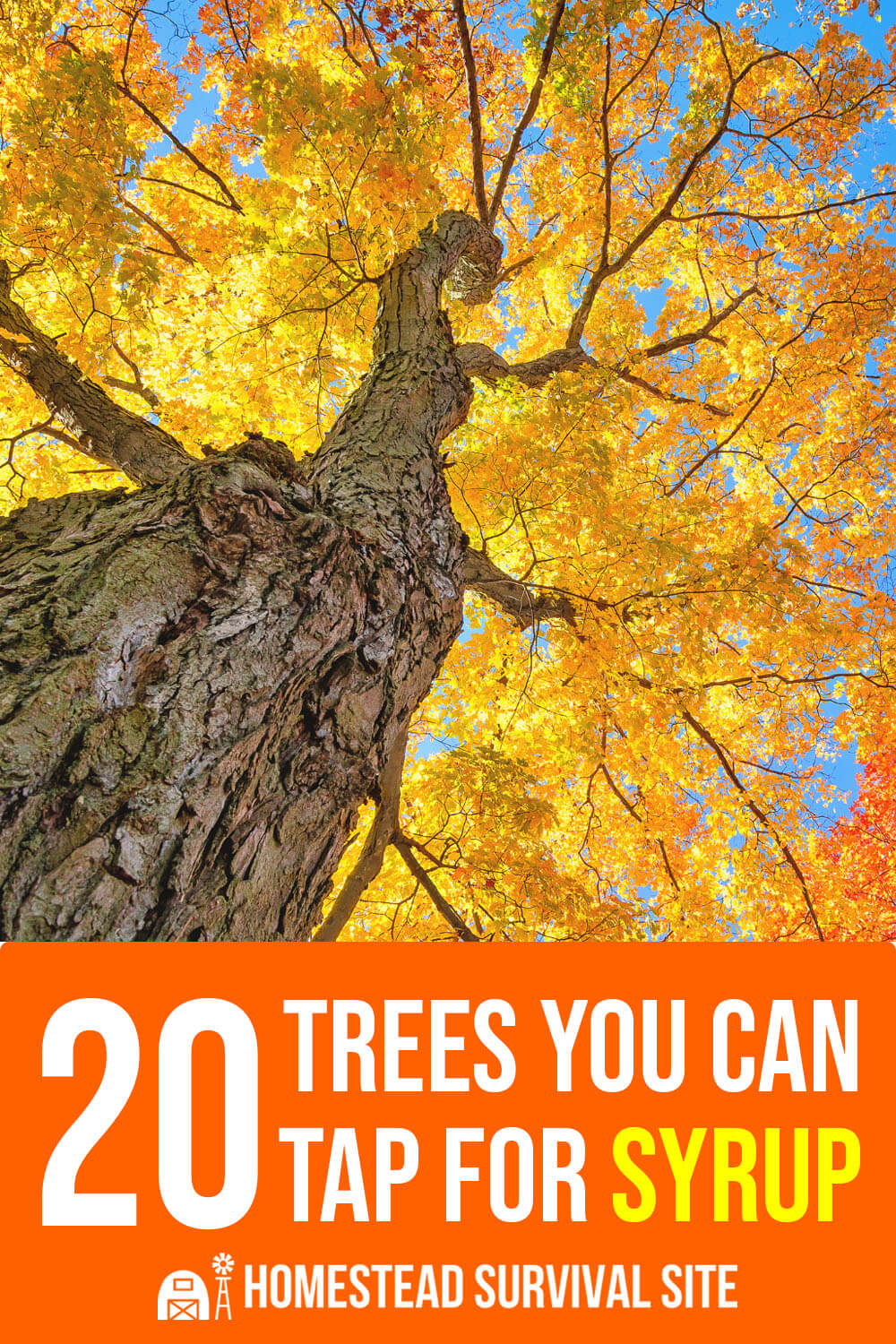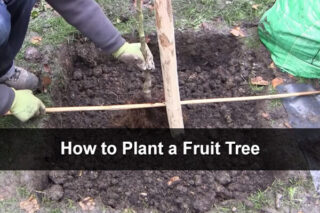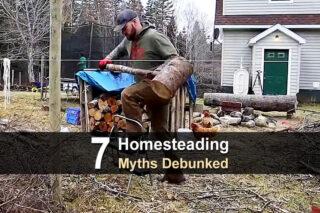Estimated reading time: 17 minutes
Tree tapping is a longstanding tradition with indigenous tribes who taught the earliest colonists how to tap maple trees in North America. Birch sap has a rich history with traditions throughout Europe, Russia, China, and Japan. These traditions survive the test of time for good reason: tree sap is liquid gold because of the benefits it offers.
Many tree species are full of sap ready to be tapped for syrup. Probably more than you realize. In fact, you may have one in your own backyard.
Want to save this post for later? Click Here to Pin It On Pinterest!
Maple Trees
Maple syrup is a delicious staple in most pantries, so the maple tree is the obvious front runner on this list. Besides being tasty, maple syrup contains many antioxidants, vitamins, and minerals, and it possesses some nature healing properties as well. This natural sweetener is a great alternative to other less-healthy choices, and you can make it yourself!
The best time to tap a maple tree depends on where you live. Typically starting in February or March, you will tap when temperatures rise above freezing during the day and below freezing at night. Tap trees that are 12 inches in diameter or bigger. You do not need to seal tap holes in a maple tree; they are self-healing.
A common misunderstanding is that you can only produce maple syrup from a few varieties of maple. Actually, you can successfully tap any of the Acer species (100+ types) of maple tree. Sugar content per tree does matter, and there are some better options in the mix. In North America, there are 7 common varieties of maple trees with a range of climate preferences.
1. Big Leaf Maple (Acer macrophyllum)
This is native to western North America, mostly along the pacific coast. As its name implies, this maple is known for its large leaves which can grow 6-12 inches across. Fall brings out its beautiful gold and yellow leaves.
This is another tree that can be tapped for maple syrup, though it is less commonly used, primarily due to the warmer locations where it grows. It does have a lower sugar content compared to the sugar maple, but in the right weather conditions, it can produce a sap that works well for maple syrup.
2. Black Maple (Acer nigrum)

These trees are often considered a subspecies of the sugar maple. They look similar to them, but can be distinguished by their leaves; the black maple tree has leaves with three lobes whereas the sugar maple has five.
Due to similar sugar content, these trees are often tapped for maple syrup production. They tend to grow in the Great Lakes states.
3. Boxelder Maple (Acer negundo)
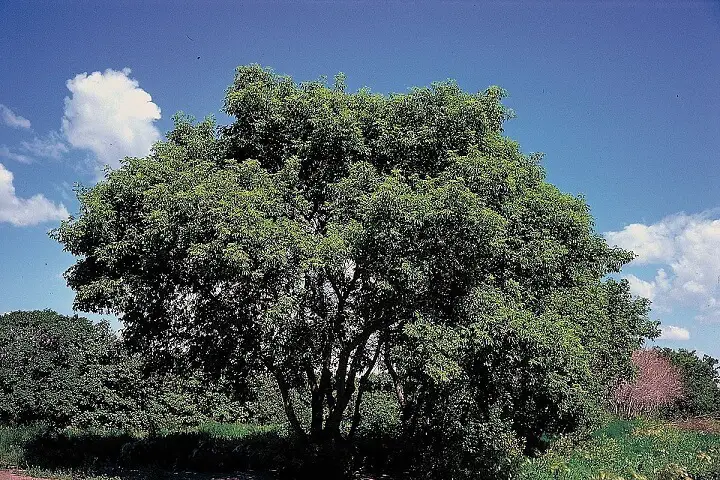
This is a fast-growing tree, not ideal for yards and gardens due to the easily broken branches from gradual die-off and fast germination of seeds. The female trees attract boxelder bugs, which is only a problem in winter when the bugs look to make themselves comfortable in homes.
However, this tree naturally occurs along rivers and other bodies of water and can be common due to its ability to successfully seed and sprout. This maple tree can be tapped for syrup. With a slightly lower sugar content, it would take 60 gallons of boxelder sap to make 1 gallon of maple syrup.
4. Canyon Maple (Acer grandidentatum)
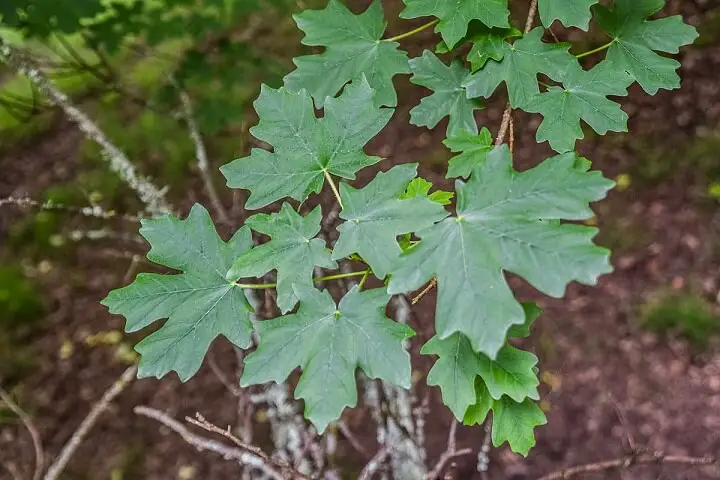
This is a close relative of the sugar maple that grows on the western side of North America. This tree has drought tolerance and the ability to grow in a variety of soils like limestone, rocky terrain, clay, and sand. In the right climate or temperature, this tree produces a very sweet sap.
5. Norway Maple (Acer platanoides)
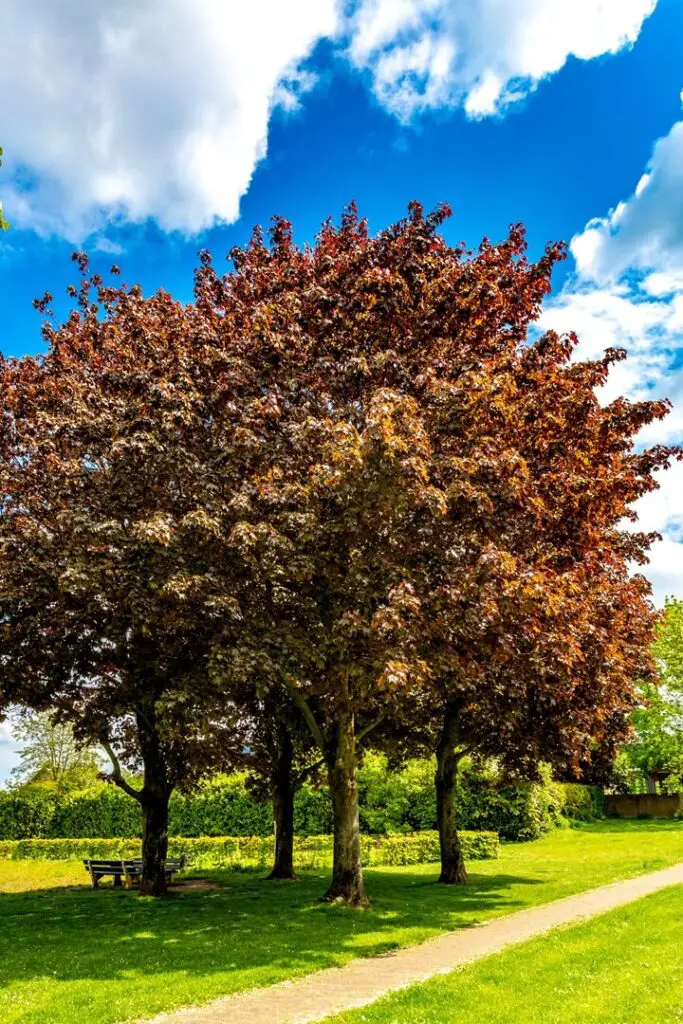
The Norway Maple, a European native, has become widespread in North America. It's easily identifiable by its bright yellow flowers in spring. Like its cousins, this maple tree's sap can be tapped for syrup. The Norway Maple's sap has a sugar content slightly lower than the sugar maple, but it still produces a delightful syrup.
Tapping Norway Maples follows the same seasonal pattern as other maples. Look for the characteristic lobed leaves and distinctive bark to identify these trees. They are often found in urban areas, making them accessible for tapping in more populated regions.
6. Red Maple (Acer rubrum)
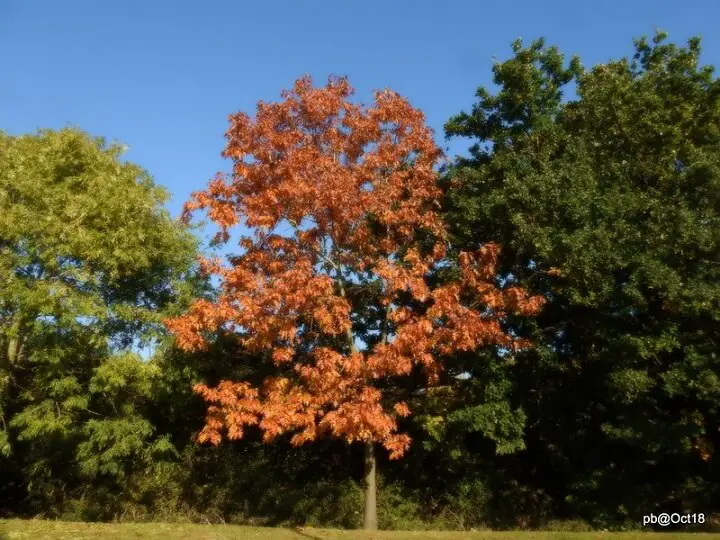
This tree is one of the most common deciduous trees through the eastern and central U.S., partly due to its ability to grow in a variety of climates from swamps to dry ground.
Growing just as high as other maple trees, the red maple stays true to its name in color changes with a scarlet red fall leaf. The maple syrup from the red maple is just as delicious as the other varieties, though the harvest season for sap is shorter, making it a less used option for tapping in commercial production.
Sugar content is around 1.5-2%, as opposed to the 2-2.5% found in black and sugar maples. The trees’ buds appear earlier in spring and, after sprouting, the sap turns bitter.
7. Silver Maple (Acer saccharium)

This is one of the most common trees in the United States. A bit smaller in stature, a mature tree will reach 80 feet. This tree is hardy and can sustain a variety of soil environments.
This is a fast-growing tree which means softer bark, easily downed branches, and surface-level root issues. Though you can tap a silver maple tree for syrup, the sap is thinner with a lower sugar content than other maple trees.
The life of the tapping season is shorter too, with early buds appearing in spring changing the flavor of the sap to bitter. For best results, tap early in the season, typically in February depending on where you live and weather fluctuations.
8. Sugar Maples (Acer saccharum)
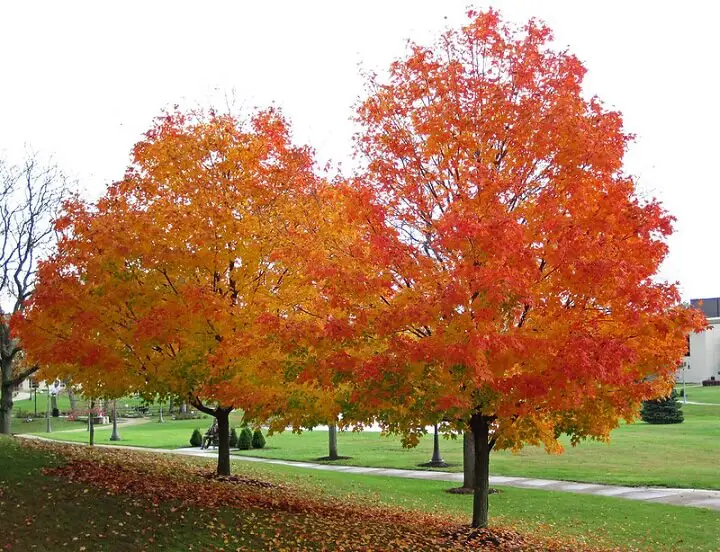
These are the ideal for making maple syrup due to the high level of sugar within the sap, which is why they are the commercial preference. 40 gallons of sap from the sugar maple tree will yield 1 gallon of pure maple syrup.
Maple trees can grow up to 110 feet high. They are hardwood trees with bright yellow, orange, and red leaves in the fall. This type of tree needs space and will create a shaded area due to its thick rounded shape.
The sugar maple prefers acidic to slightly alkaline soil, and it does not thrive where the ground is too wet or too dry. The sugar maple is found from southeastern Canada to the northeastern United States.
Historically, Native Americans regularly utilized the sugar maple, which was observed by early European settlers. The maple syrup was an early sweetening agent, and the inner bark was used to make a tea to help coughs and stomach sickness.
Birch Trees
Though tapping birch trees may seem a bit less common, there are many reasons to try it. It is a longstanding tradition in Sweden and Norway, as well as a growing trend in the United States.
Birch sap has vitamins, minerals, antioxidants, amino acids, protein, and detoxifying properties. Some believe it helps bone health, digestion, cell protection, skin health, and may help fight a variety of diseases and cancer.
The flavor of the birch sap is mild and slightly sweet, with a water-like consistency. Made into syrup, it is less sweet than maple with a mild spice note similar to licorice.
However, the flavor changes after a few days due to natural fermentation. You can drink the sap liquid on its own, evaporate it to preserve it before fermentation, make it into a syrup, wine, beer, mead, or skin products.
Tapping a birch tree can be done once a year in early spring before the leaves begin to come back. There is an optimal one-month period to tap for the best product as the growth of leaves will change the flavor of the sap. Ideal tapping time is usually around April, right as maple season is ending and temperatures are hitting the higher 40’s and 50’s (Fahrenheit).
110 gallons of birch sap are needed to make 1 gallon of syrup, so it is a bigger job than making maple syrup. Because of the work involved, it can cost up to $400 to buy a gallon of birch syrup, making this a worthwhile hobby and survival skill.
When looking for which birch trees you can tap, choose anything in the Betula genus. The sap is more acidic than maple, so keep that in mind if you first tap maple trees and want to reuse your materials in birch season.
9. Alaskan Birch (Betula neoalaskana)
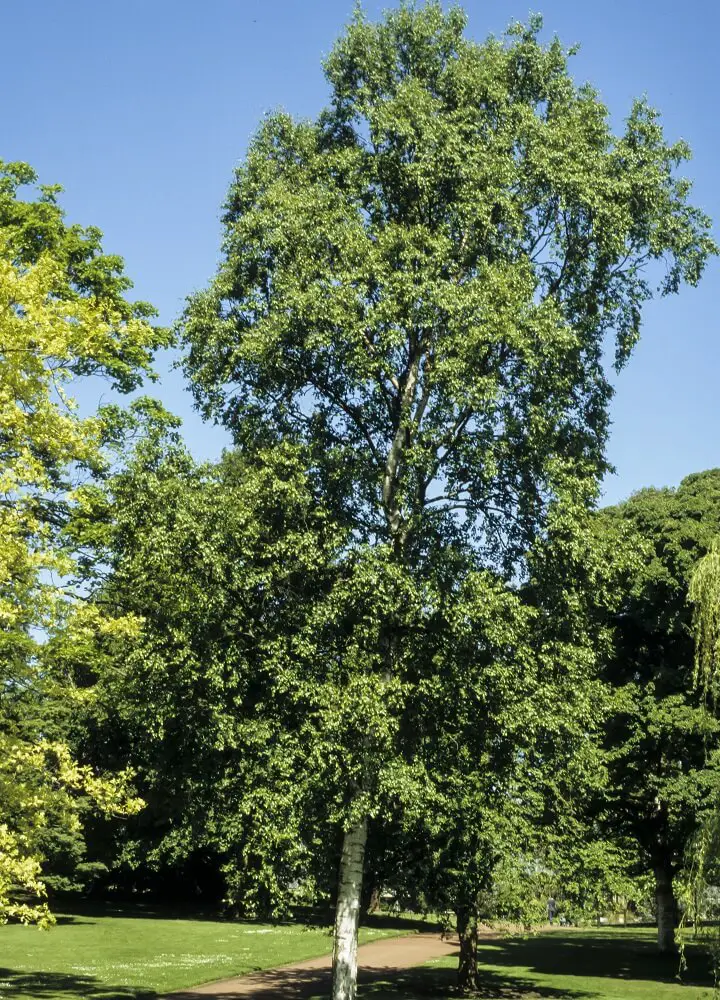
This tree is primarily found in Northern Canada and Alaska (which is how it got its name). This tree grows in an variety of surroundings from mountain ranges to wet areas.
Though the bark differs, obtaining sap from this tree is similar to the paper birch. Both trees are used commercially for bulk birch sap production.
10. Alder (Alnus genus)
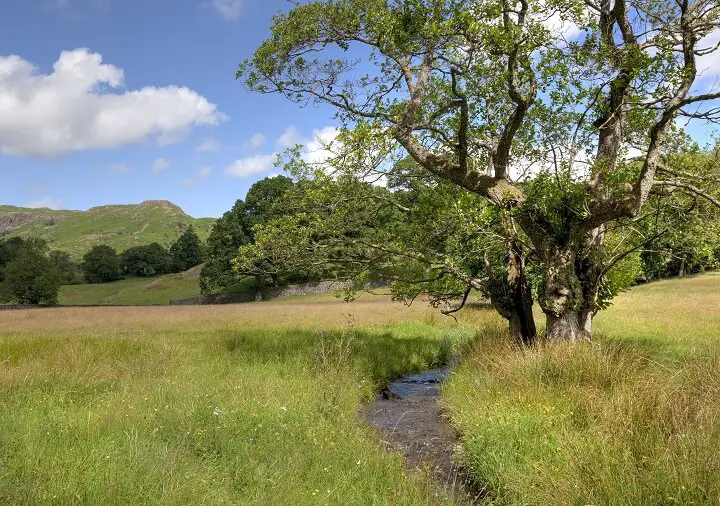
Although they don't have “birch” in the name, these trees are a part of the birch tree family and yield a similar sap as when you tap other birch trees.
Because these trees are often found in the Pacific Northwest, this tree can be a good alternative where it is difficult to grow maple trees. Like other birch trees, the sap will create a syrup with a slightly spicy flavor profile.
11. Grey Birch (Betula populifolia)

The bark of this tree looks like the paper birch, but the paper peels less easily. This birch is a bit more resistant to a variety of temperatures, meaning it can grow in much of the United States but with a young life of 30 years.
Though it is not commercially tapped, it’s an easily found option to get started and produce birch sap if the tree grows large enough.
12. Paper Birch (Betula papyrifera)
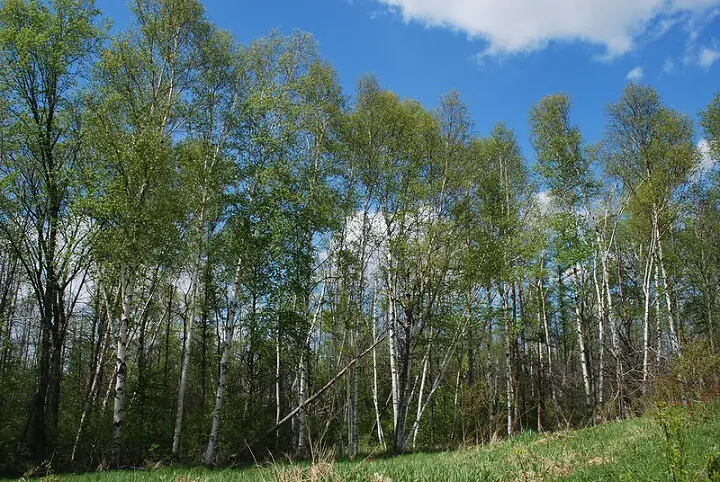
Named for the paper-thin white bark that peels in layers, this tree is short-lived compared to other varieties of birch trees. Sensitive to warm climates and humidity, this tree will live just 30 years, though that can more than triple in a colder ecosystem.
This tree is primarily found in Canada, Alaska and the far Northern regions of the United States with isolated patches scattered in other areas of the U.S. This tree is one of the first to re-grow after a natural disaster due to its ability to reseed, though it can be overtaken and outgrown quickly. With the highest birch sugar content (0.9%), this is a great option to tap.
13. River Birch (Betula nigra)

The River Birch, a native to the eastern United States, is another viable option for tapping. Known for its unique, peeling bark that ranges in color from tan to reddish-brown, this tree is often found along riverbanks and wetlands.
While the sugar content in River Birch sap is lower than that of the Sugar Maple, it still provides a unique, slightly sweet syrup with a distinctive flavor. The best time to tap River Birch is in late winter to early spring, similar to other birch trees. This tree not only offers sap for syrup but also adds ornamental value to the landscape.
14. Sweet Birch (Betula lenta)
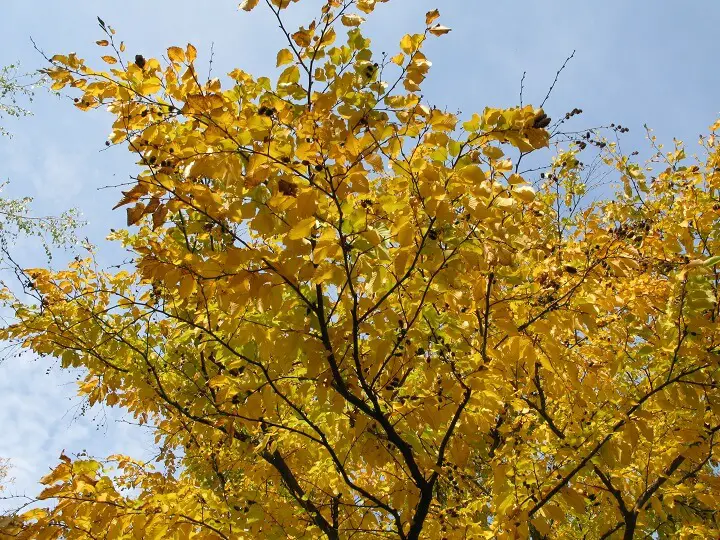
This is a medium-size tree, typically growing 50-80 feet. Attractive for a garden, this birch is tolerant to a variety of climates but prefers well-drained moist soil.
When left undisturbed, this tree can live a very long time with the oldest known sweet birch being 368 years old. With fast-flowing sap, this tree is a great option to tap.
15. Yellow Birch (Betula alleghaniensis)
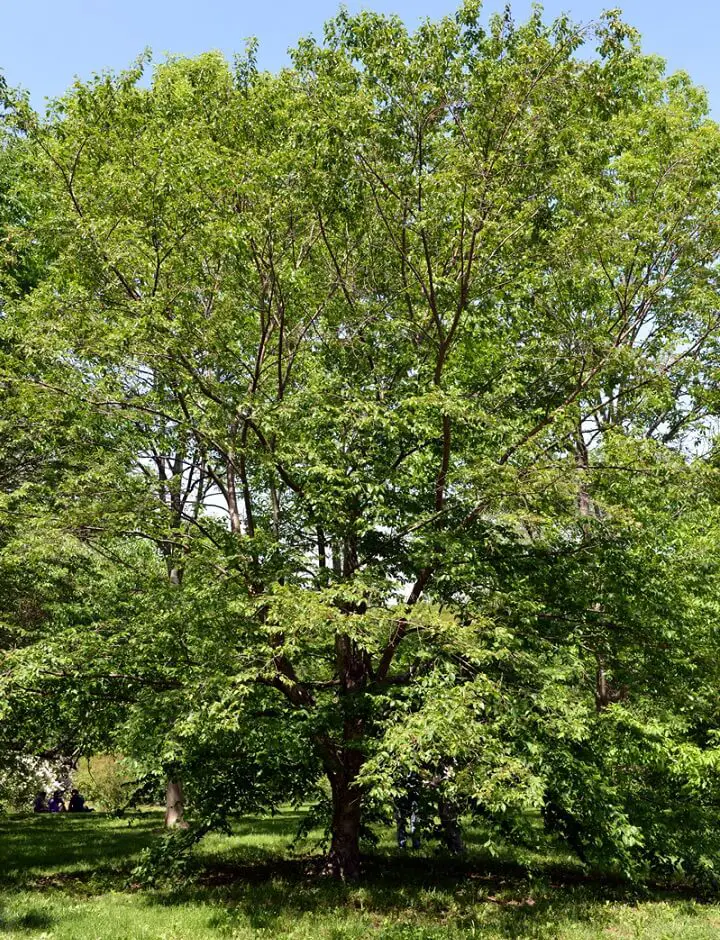
These are commonly found in much of the Northeastern region of the United States, but they can also be found in the Midwest and as far south as Georgia. Like other birch trees, a hotter climate makes for a shorter life.
This is a hardwood tree, largest in the birch family, and it possesses a golden-yellow birch bark, giving the tree its nicknames of yellow or golden birch tree. The antioxidant count is high in the yellow birch sap and has a fast flow. Native Americans often utilized the sap and bark for medicinal purposes.
Other Trees to Tap
16. Black Walnut (Juglans nigra)
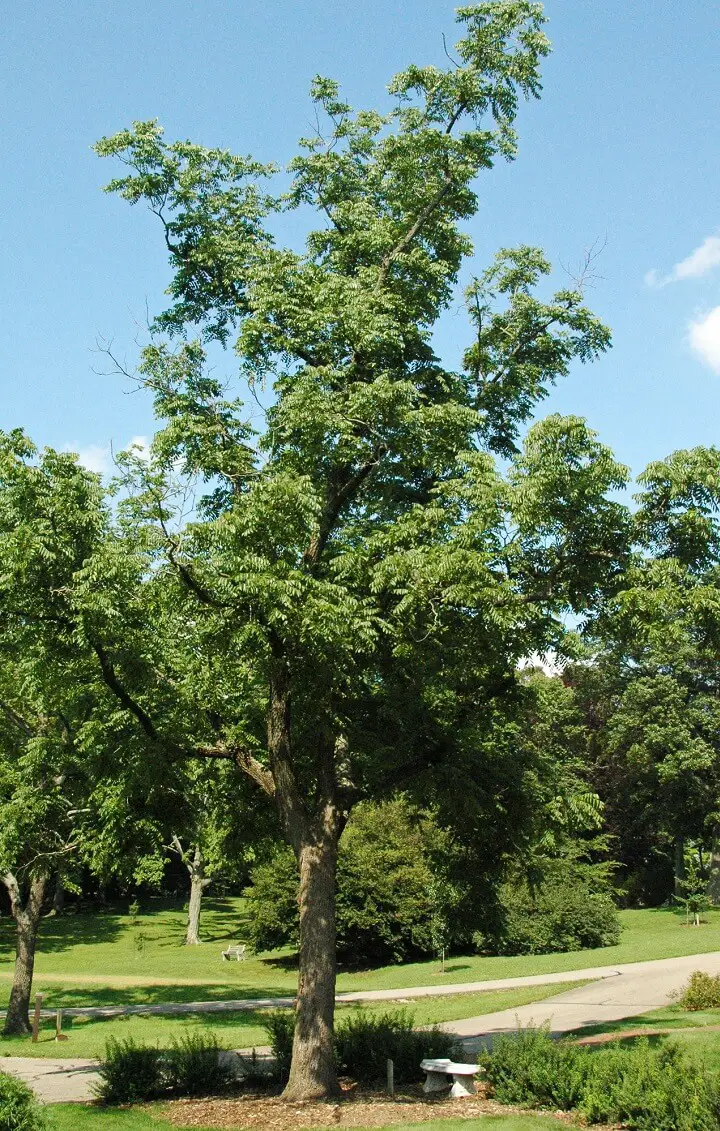
This tree produces a light and refreshing sap with a nutty flavor. Syrup produced from a walnut tree is sweet and rich, with a distinguished unique flavor compared to maple syrup.
Tapping times may vary due to location but seem to be similar to maples or just after, with cold nights and warmer days. Like a maple, 40 gallons of walnut sap will make 1 gallon of walnut syrup.
Because walnut trees bud a bit later than others, the tap season lasts longer than other trees, but they have a smaller sap production, meaning it will take more work to obtain enough sap for syrup.
17. Butternut or White Walnut (Juglans cinerea)
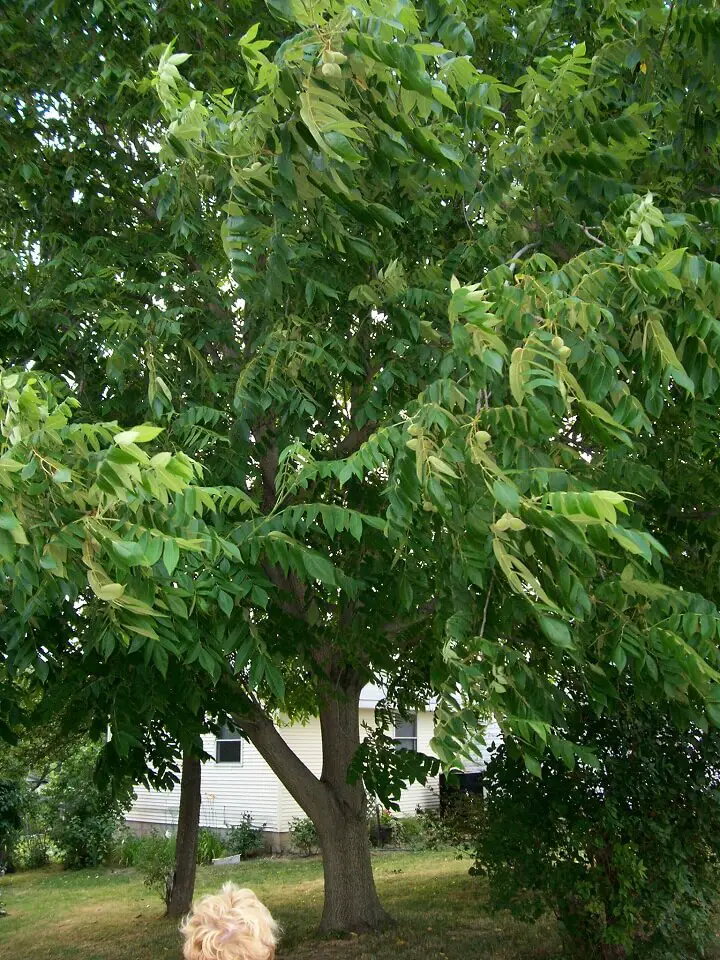
These trees are like the black walnut tree, though they are a bit hardier in climate tolerance. Found mostly in the Eastern part of the U.S., these trees have a sugar content of 2% like the sugar maple.
These trees are on the verge of becoming endangered and are listed as so in Canada due to bunch disease and butternut canker. Despite the delicious sap inside, it is best to leave healthy butternut trees alone and consider its relatives like the black walnut or Buartnut (Juglans xbixbyi), which is a hybrid of the Butternut and the Heartnut tree (Juglans ailantifolia).
18. European Larch (Larix decidua)
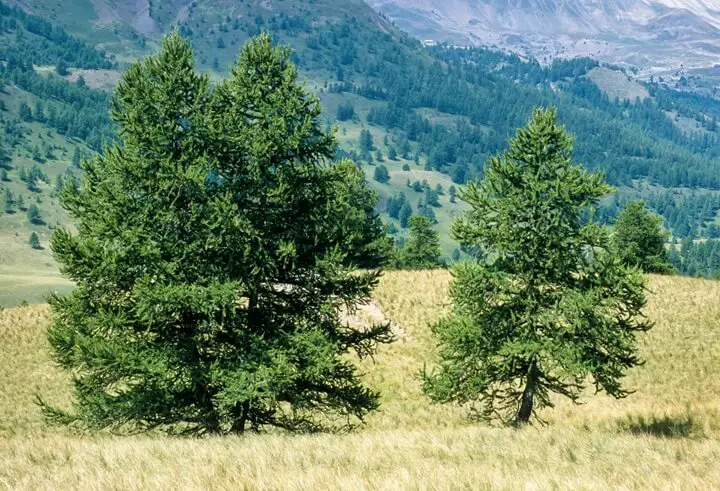
While not traditionally known for syrup production, the European Larch presents an interesting option. This deciduous conifer, identifiable by its needles that turn golden in autumn before falling, has a sap that can be tapped in early spring.
The sap of the European Larch is less sweet than maple sap, but it can still be boiled down to create a syrup with a delicate, slightly fruity flavor. This tree is more common in cooler climates and higher altitudes, offering a syrup tapping opportunity in regions where traditional maple trees may not thrive.
19. Ironwood or Hop Hornbeam (Ostrya virginiana)
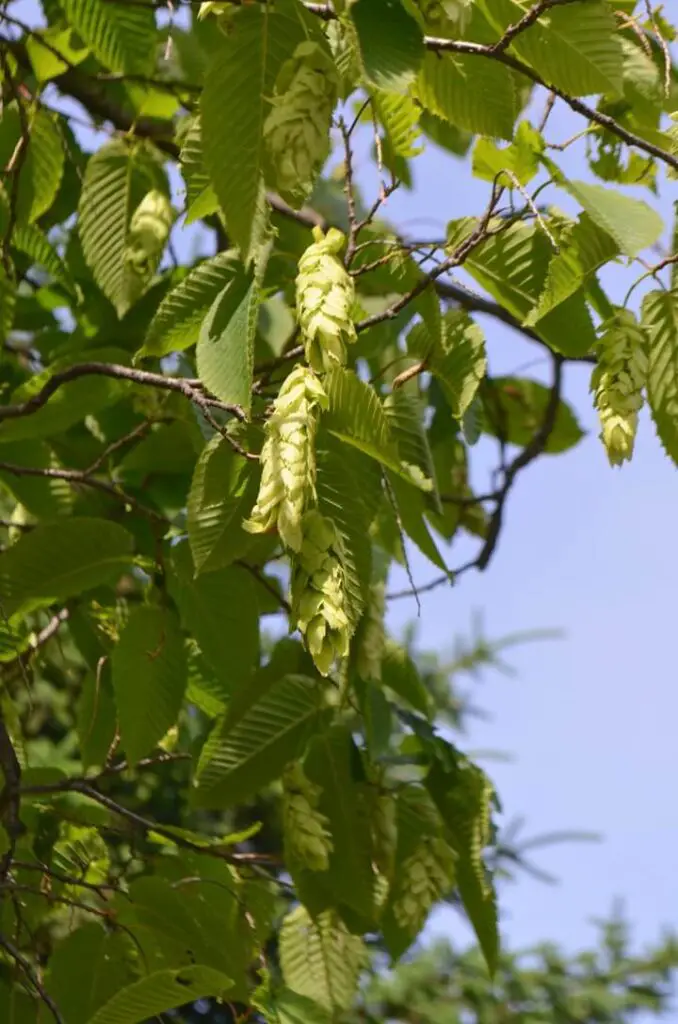
The Ironwood, also known as the Hop Hornbeam, is a lesser-known tree for syrup tapping but offers a unique opportunity. Found throughout the eastern United States, this tree is known for its hard, dense wood and distinctive hop-like fruit.
The sap of the Ironwood has a lower sugar content compared to maple trees, meaning more sap is needed to produce syrup. However, the resulting syrup has a unique, sweet flavor that makes the extra effort worthwhile. Tapping should occur in late winter when the sap begins to flow, similar to maple trees.
20. Sycamore (Platanus occidentalis)
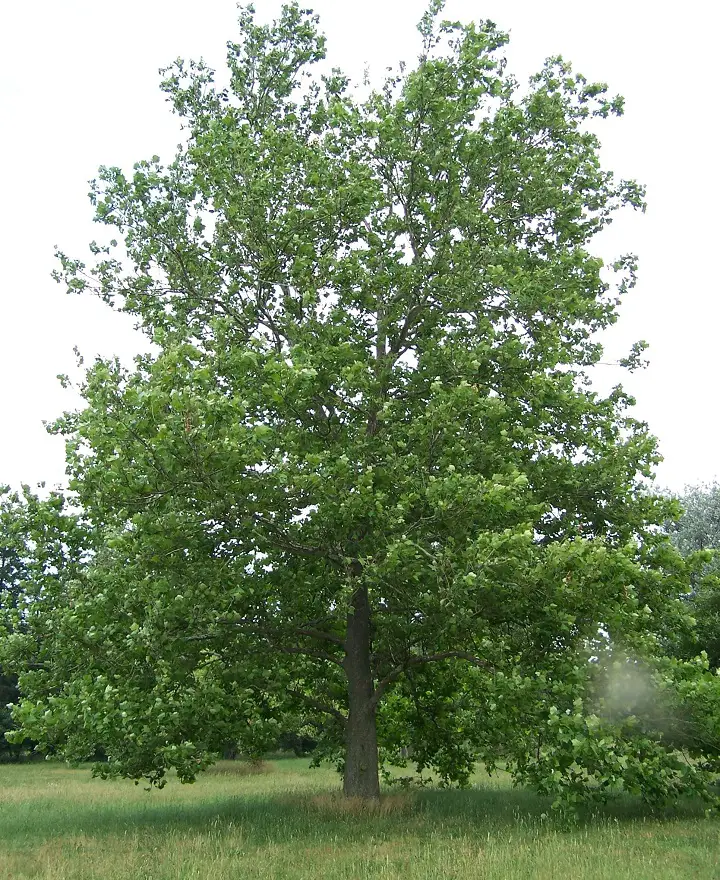
These trees are a common large, shade tree native to eastern and central North America. A sycamore tree is recognizable by its grey and white peeling bark.
These trees are big shade trees but can be a bit messy in a yard. Their wood is commonly used for furniture and butcher’s block, and they have a tasty sap inside. The sugar content is not high, but many have compared the flavor of sycamore syrup to butterscotch or honey.
Final Thoughts
Though there are many other trees that can be tapped for syrup, those listed here have the best benefits and results. Deciduous trees tend to produce a sap somewhere in the spring season, so you can always research the trees specific to your yard to see what fruits may come from your labor.
Like this post? Don't Forget to Pin It On Pinterest!
You May Also Like:

